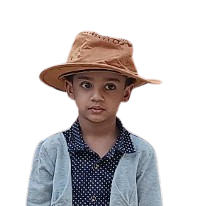1. Tree Health Monitoring with Drones:
Drones equipped with sensors provide aerial views for early detection of tree stress.
Aerial surveys help assess large tree populations and identify potential issues.
2. Smart Irrigation Systems:
IoT-based systems monitor soil moisture levels around trees.
Automated irrigation ensures trees receive optimal water levels for health and growth.
3. GIS (Geographic Information System) Mapping:
GIS technology aids in mapping and inventorying urban tree populations.
It assists in planning, tracking tree health, and managing tree-related data.
4. Tree Risk Assessment Apps:
Mobile applications enable arborists to conduct risk assessments on-site.
These apps help in evaluating potential hazards and determining appropriate actions.
5. Air Spade Technology:
Air spade tools use compressed air to excavate soil around tree roots.
This technology aids in root inspection, aeration, and addressing soil compaction.
6. Tree Inventory Management Software:
Software platforms assist in creating and managing comprehensive tree inventories.
They track tree health, maintenance schedules, and support decision-making.
7. DNA Analysis for Tree Identification:
DNA testing helps accurately identify tree species, particularly in diverse urban environments.
It aids in preserving biodiversity and implementing targeted conservation efforts.
8. Automated Pruning Systems:
Robotics and automated pruning devices enhance efficiency and precision.
These systems reduce manual labor and ensure consistent pruning practices.
9. Soil Sensors for Nutrient Monitoring:
Soil sensors measure nutrient levels, helping arborists tailor fertilization plans.
Precision in nutrient management contributes to overall tree health.
10. Augmented Reality (AR) for Training:
– AR applications provide interactive training experiences for arborists.
– It simulates realistic scenarios, improving skill development and safety awareness.
11. Urban Heat Island Mitigation Modeling:
– Modeling tools assess the impact of trees on mitigating urban heat islands.
– They aid urban planners in strategically planting trees for maximum cooling effects.
12. Thermal Imaging for Stress Detection:
– Thermal cameras identify temperature variations in tree canopies.
– This technology helps pinpoint stressed areas, guiding targeted interventions.
13. 3D Tree Scanning and Modeling:
– 3D scanning technologies create detailed models of tree structures.
– These models assist in precise measurements, analysis, and planning.
14. Crowdsourced Tree Mapping Apps:
– Apps encourage citizen engagement in tree mapping initiatives.
– Crowdsourced data aids in creating comprehensive tree databases and conservation efforts.
15. Biometric Sensors for Continuous Monitoring:
– Biometric sensors track physiological aspects of tree health.
– Continuous monitoring enables timely intervention based on real-time data.

